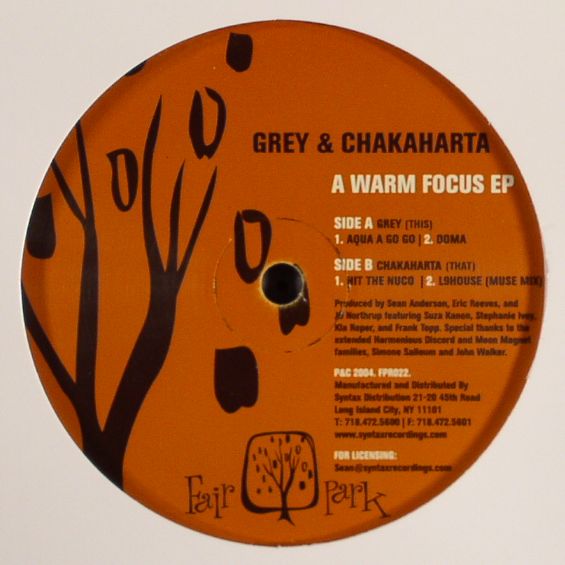Recent Posts:
Station Point — Alcyone Chorus EP
Posted on | July 13, 2023 | No Comments
The latest Station Point EP drops Friday July 14, 2023. Featuring two originals “Alcyone Chorus” and “Babombicz”, backed by a time-bending acid shuffle mix by production maestro extraordinaire @patchenp, and a stylish chrome and neon breaks mix by @harmoniousdiscordrecordings label boss @pointbender.
Cover art by @pixeljuggler + Midjourney AI, additional design by @coryhubbell.
Released on Harmonious Discord Recordings.
Check it out now on Bandcamp, Beatport, Apple Music, or Spotify.
Chakaharta — Break It On Down
Posted on | October 15, 2022 | No Comments
Lo-fi house stomper by Chakaharta. Stream or download at Bandcamp, or find it here on all major platforms.
Resonant Frequencies Vol. One
Posted on | December 8, 2018 | No Comments
Support local music and check out my new track “Disintegrate Me Gently” on The Resonant Frequencies Electronic Open Mic’s first artist compilation!
Opaque Ocean (Live Sketch)
Posted on | December 4, 2018 | No Comments
Elements EP
Posted on | November 22, 2018 | No Comments

After 13 years collecting virtual dust on my hard drive, I’m grateful to be releasing this EP for free on Bandcamp. Please download, share, and let me know what you think!
Most Common Keys For House and Deep Tech Music
Posted on | March 6, 2018 | No Comments
In an attempt to get my tracks to sound more like the tunes I like to DJ, I ran across an article about how club sub freq’s can range down to about 40Hz, which is just below the note E1.
| Note | Hz |
| C1 | 32.7 |
| D1 | 36.7 |
| E1 | 41.2 |
| F1 | 43.7 |
| G1 | 49.0 |
| A1 | 55.0 |
The article (wish I could find it again) mentioned that’s why a bunch of tracks are in F and G — because those root bass notes fall comfortably in the range that can be played back. A low F1 note is probably one of those tones that sounds KILLER on a good rig.
Looking at some of my favorite house, techno, and deep tech tracks from 2017, I noticed that most are in F, Bb, Eb, G, or C. I’m not sure my analysis software (djay Pro 2) is discerning major vs minor here.
But check out the circle of fifths:

(By Just plain Bill — Own work, CC BY-SA 3.0, https://commons.wikimedia.org/w/index.php?curid=4463183)
… those keys are all clustered in the upper-left corner, which means that they will be easy to transition to during a set because jumps to neighboring keys in the circle of fifths sound good.
Now interestingly, this guy’s analysis of the Beatport Top 100 Tracks showed a different set of popular keys — but I don’t play tracks as “Pop”-y as the Top 100. Who knows.
Mid-Side Spatialization Patch
Posted on | December 24, 2015 | No Comments
This is a mid-side stereo patch exploring ways of spreading the various outputs from the DPO around the stereo field. The DPO sends 6 waveforms to the RxMx. The lower-numbered RxMx channels are fed fundamentals, and become the “mid” signal. The higher channels have increasingly spectrally-rich oscillators, and become the “side” signal.
The first clip has some reverb, ping-pong delay and drums added. The second clip is the raw patch:
Mid-side decoding is:
L = M + S
R = M — S
Maths is used to invert the “Side” signal and subtract it from “Mid”. The Optomix is used to add these two together. That way, we have the L and R signals.
I’m filtering the Side signal via the MMG, which allows for filtersweeps that only happen in stereo. It’s also a good idea to scoop out the frequency range occupied by the Mid signal with a highpass so the decoded sound isn’t as hollow. One of the many beauties of MS encoding is you can do stereo filtering (of sorts), using mono filters / effects.
One interesting part is calibrating the levels of channels 2 and 3 on Maths to get the balance right. Set the RxMx channel and radiate controls so you only hear channel 1. This should be pure “Mid”. Adjust Maths Ch 2 so that the L and R outputs are the same level. Next, set the RxMx so you only hear channel 6 — this should be pure “Side”. Adjust Ch 3 on Maths in the negative until the L and R channels have a roughly equal level. The sound should be completely phase-inverted from left to right.
Now, setting channel and radiate should mix between mono and stereo imaging, with the higher harmonics appearing mainly in the stereo field. Things can get pretty nuts of you tune Oscillator A and B to different frequencies.
Ouroboros — Shared System Series
Posted on | November 17, 2014 | No Comments
I got a modular piece accepted on the Make Noise Records “Shared System Series” compilation today! The series is intended to showcase artists using the MakeNoise SharedSystem rig to make a live composition, with no overdubs and no external effects (except an optional reverb).
Here’s my piece:
Here’s the patch:
http://www.modulargrid.net/e/patches/view/9225
And check out the whole playlist here:
Night EP
Posted on | April 6, 2014 | No Comments
Out now on Beatport via Harmonious Discord Recordings, featuring remixes by Evan Marc (aka Bluetech) and Patchen Preston. Artwork by ellisett.
1) Aeolian Intro
2) C5
3) C5 (Patchen’s Yellow Fever Mix)
4) Night Groove (Original Mix)
5) Night Groove (Bluetech Remix)
6) D13
7) Talk Is Cheap
http://www.beatport.com/release/night-ep/1241604
Wogglebug + DPO as White Noise Source
Posted on | April 6, 2014 | No Comments
So I recently got a MakeNoise SharedSystem modular rig, and one thing missing from it was an apparent lack of the ability to make… noise. White noise.
However, by pushing the Wogglebug and the DPO’s internal modulation routing to the extreme, you can get some decent-sounding white noise. Basically, you turn most of the knobs on both modules all the way clockwise and listen to the DPO final output.
Here’s how it sounds, going through an MMG for filter sweeps and the Echophon for some delay:
keep looking »














